Imagine a garden that plants itself, flourishing year after year with minimal effort.
These 17 resilient, self-seeding beauties naturally propagate to keep your beds vibrant and ever-changing—no constant replanting required.
Ready to transform your yard into a maintenance-free paradise? Let’s go!
1. Cosmos
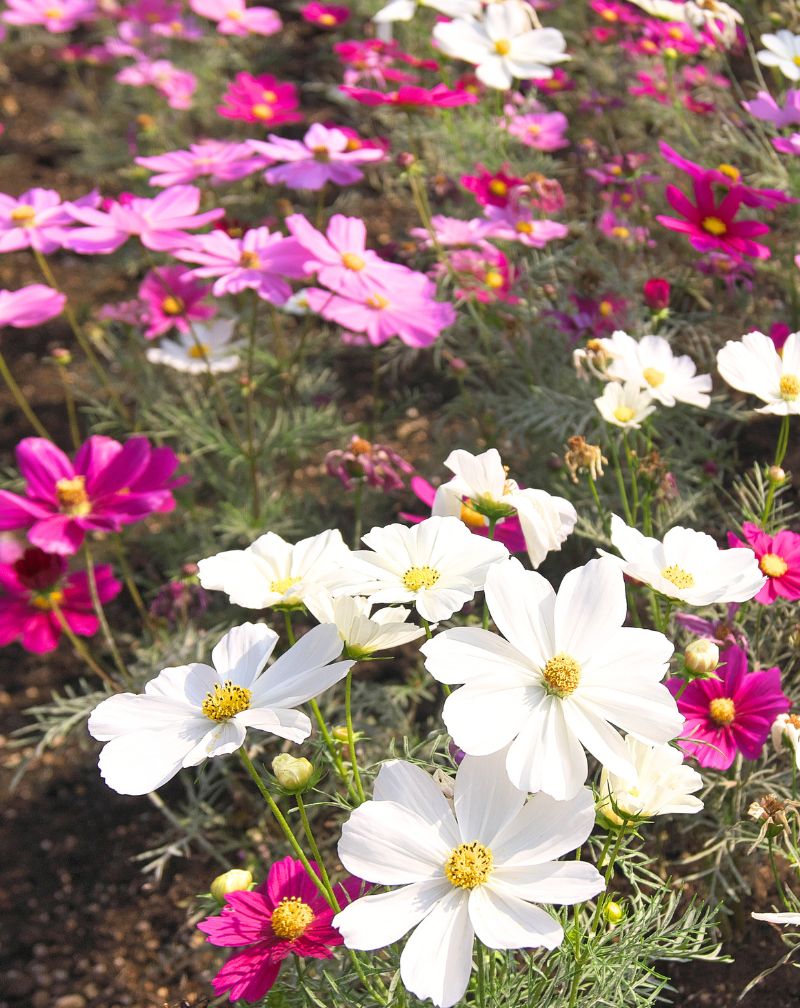
US Hardiness Zone: 3-10
Shade/Sun Requirements: Full Sun
Other Essential Information: Well-drained soil, drought-tolerant
I absolutely adore Cosmos for their cheerful, daisy-like flowers that bloom from summer through fall. These hardy plants thrive even in poor, dry soils, making them incredibly easy to care for.
One of the best things about Cosmos is their prolific self-seeding nature. Simply allow a few flowers to go to seed, and watch as new plants emerge the following season, populating your garden with minimal effort.
2. Sweet Alyssum
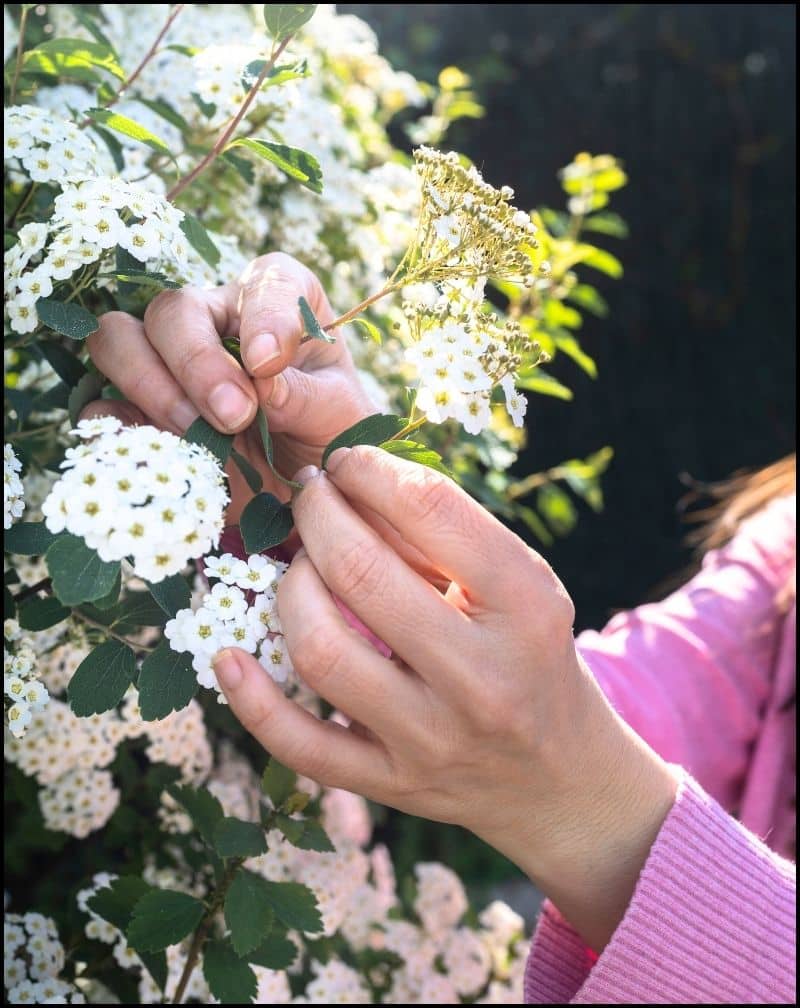
US Hardiness Zone: 4-10
Shade/Sun Requirements: Full Sun to Partial Shade
Other Essential Information: Attracts pollinators, low maintenance
Sweet Alyssum is a delightful addition to any garden with its tiny, fragrant flowers available in white, pink, and purple hues.
This tough little plant not only enhances the aesthetic appeal of your garden but also attracts pollinators like bees and butterflies.
Its ability to thrive in poor soil conditions and require minimal care makes Sweet Alyssum a favorite for self-seeding gardens.
3. Forget-Me-Nots
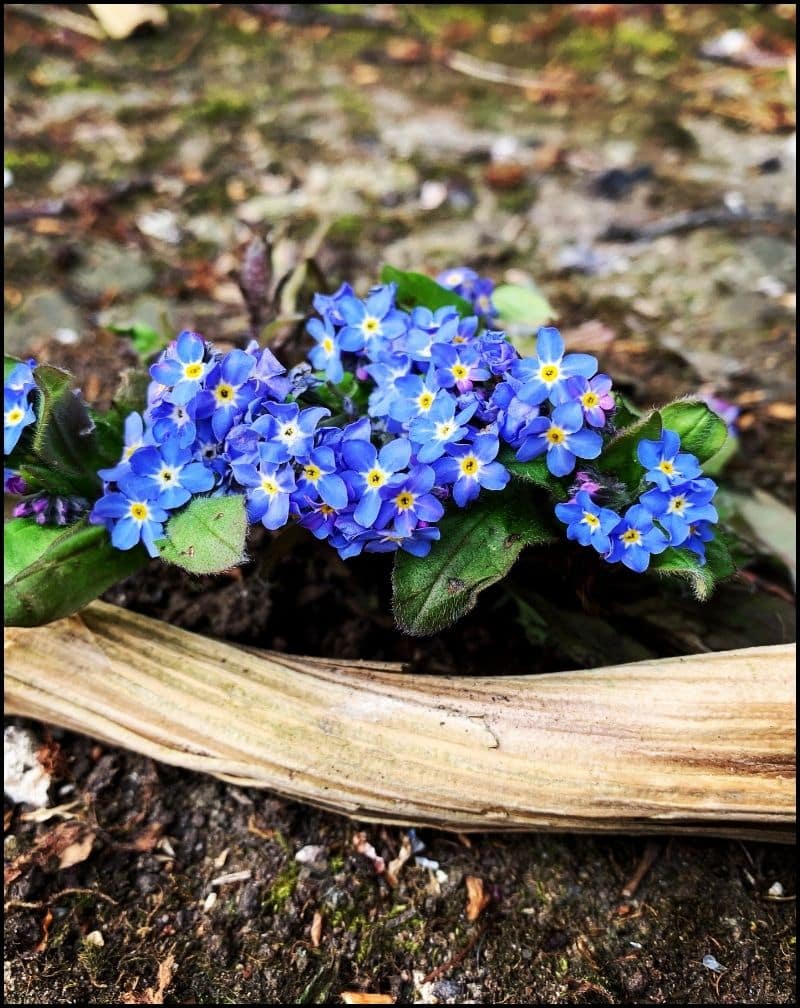
US Hardiness Zone: 3-9
Shade/Sun Requirements: Partial Shade
Other Essential Information: Moist soil, attracts pollinators
Forget-Me-Nots are enchanting little flowers that add a whimsical touch to any garden. During spring and early summer, they create a beautiful carpet of blue that is both charming and eye-catching.
These plants excel at self-seeding, making them a low-maintenance option. Plant them in a semi-shaded area with moist soil to achieve the best results, and enjoy the delightful surprise of new blooms popping up in unexpected places.
4. Black-eyed Susan (Rudbeckia)
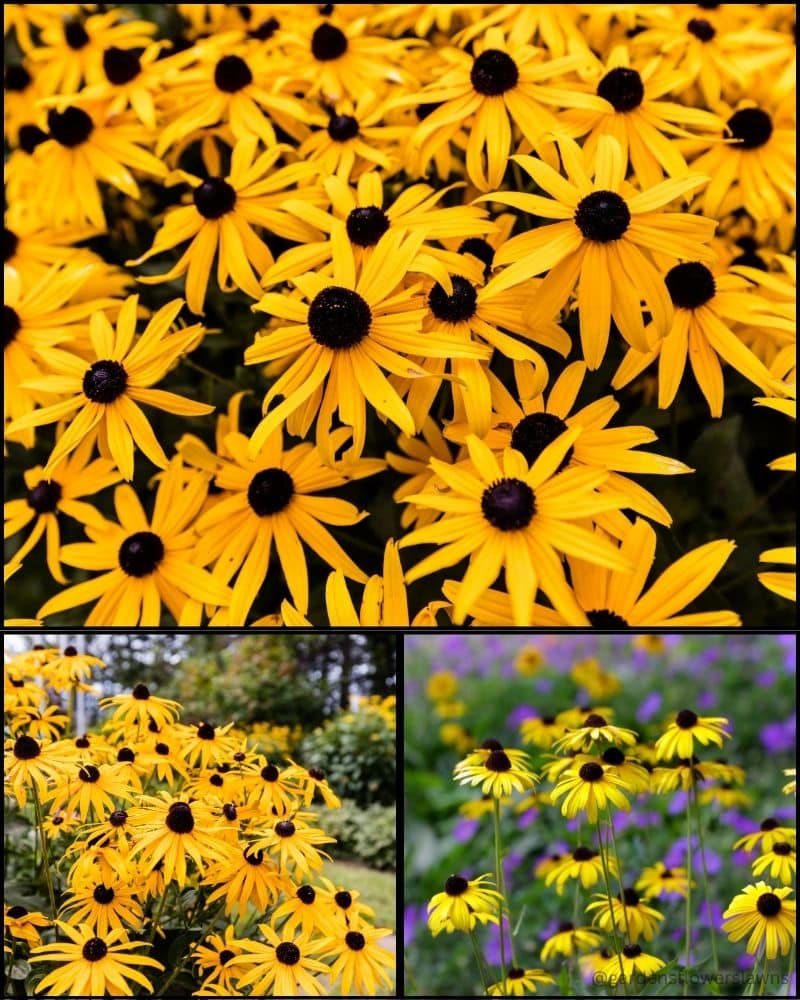
US Hardiness Zone: 3-9
Shade/Sun Requirements: Full Sun
Other Essential Information: Attracts pollinators, drought-tolerant
I love Black-eyed Susans for their bright yellow petals and striking dark centers. These hardy plants can thrive in various climates and are incredibly resilient.
Watching them pop up year after year with minimal effort is always exciting. Additionally, Black-eyed Susans attract pollinators like bees and butterflies, enhancing the overall ecosystem of your garden.
5. Calendula (Pot Marigold)
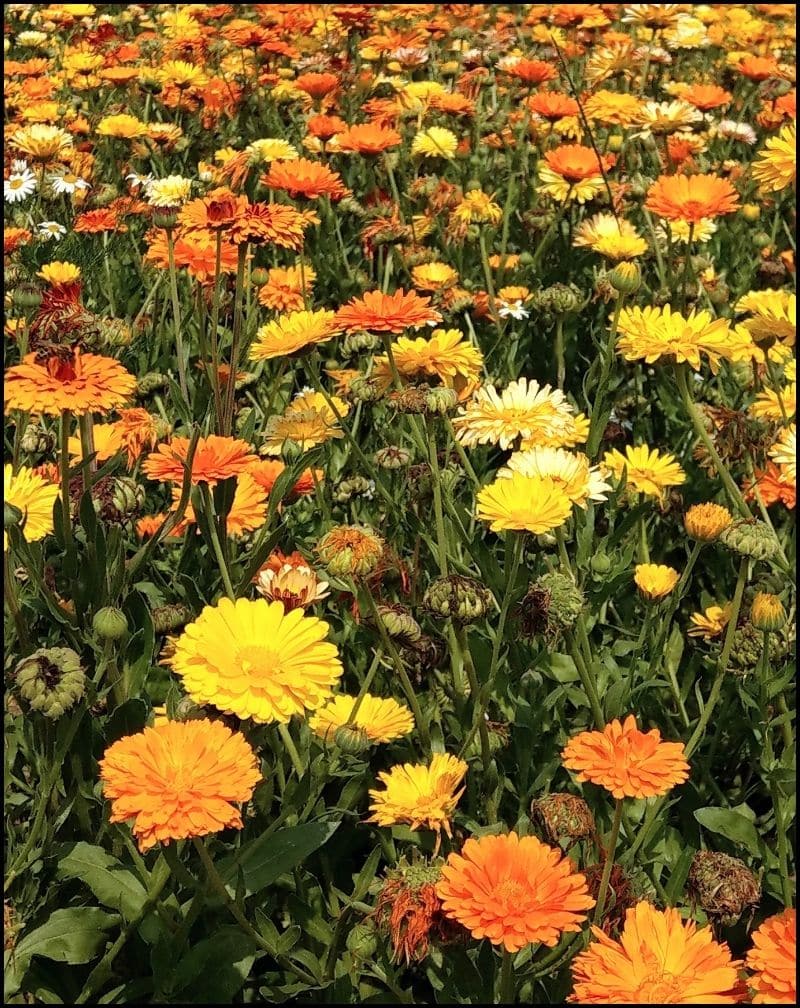
US Hardiness Zone: 2-11
Shade/Sun Requirements: Full Sun to Partial Shade
Other Essential Information: Edible flowers, attracts pollinators
Calendula, also known as pot marigold, is one of my all-time favorite self-seeding plants. Its bright, cheerful flowers can instantly brighten up any garden space.
Calendula is incredibly easy to grow—simply let it go to seed, and new plants will emerge the next season without any extra effort. Beyond its beauty, Calendula is also beneficial for pollinators, making it a versatile and valuable addition to your garden.
6. Larkspur
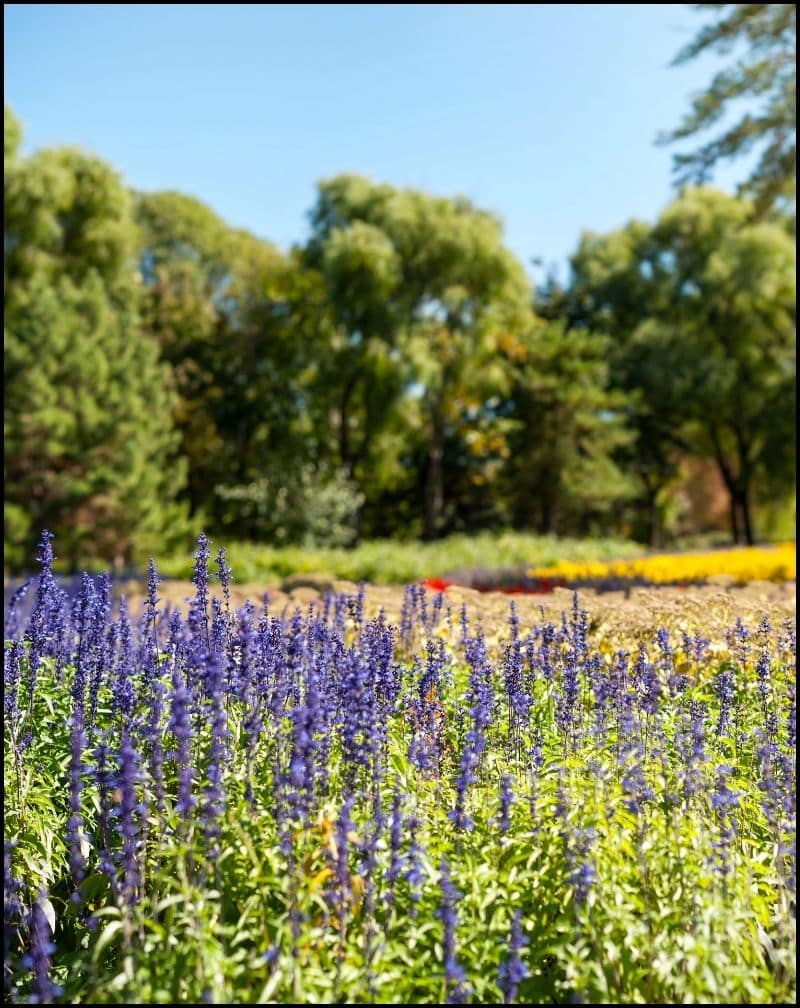
US Hardiness Zone: 2-11
Shade/Sun Requirements: Full Sun to Partial Shade
Other Essential Information: Attracts pollinators, long blooming period
Larkspur adds a touch of elegance to the garden with its tall, graceful stems and vibrant blue, pink, and white blooms.
These plants easily self-seed, ensuring that you don’t have to worry about replanting them each year.
Plant Larkspur in a sunny spot, and they will naturally spread, providing continuous color and attracting pollinators like bees and butterflies.
7. Snapdragons
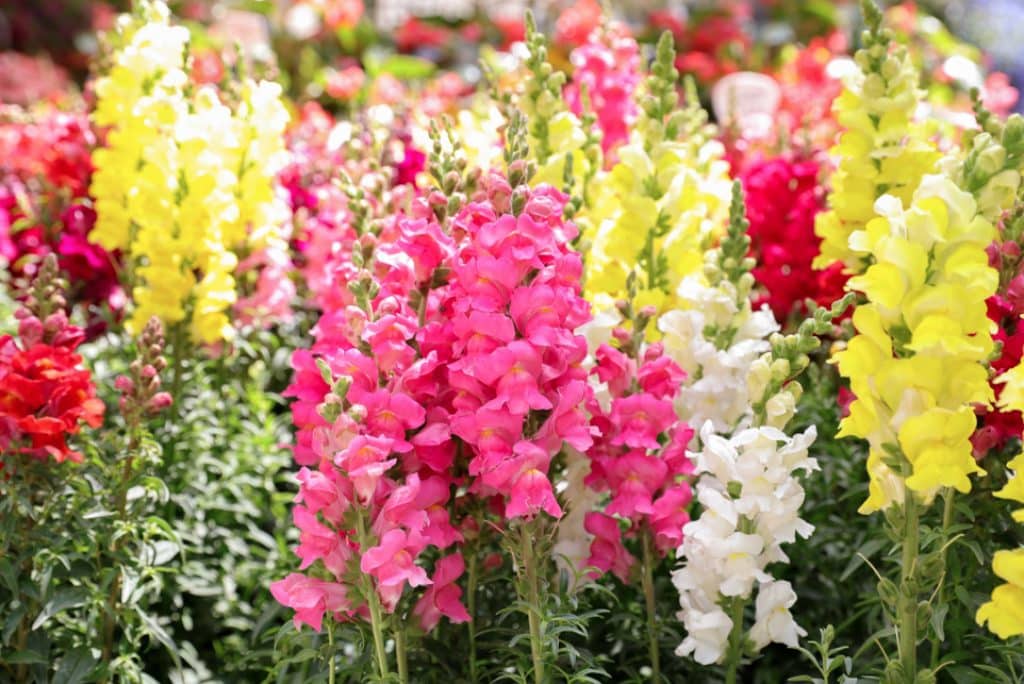
US Hardiness Zone: 4-10
Shade/Sun Requirements: Full Sun
Other Essential Information: Vibrant colors, versatile in garden design
Snapdragons are beloved for their vibrant colors and unique, dragon-shaped flowers. These beauties can easily self-seed in your garden, often popping up in the most unexpected places and adding a delightful surprise to your floral display.
Snapdragons thrive in sunny spots with well-drained soil, creating a charming and ever-changing garden scene year after year.
8. Hollyhocks
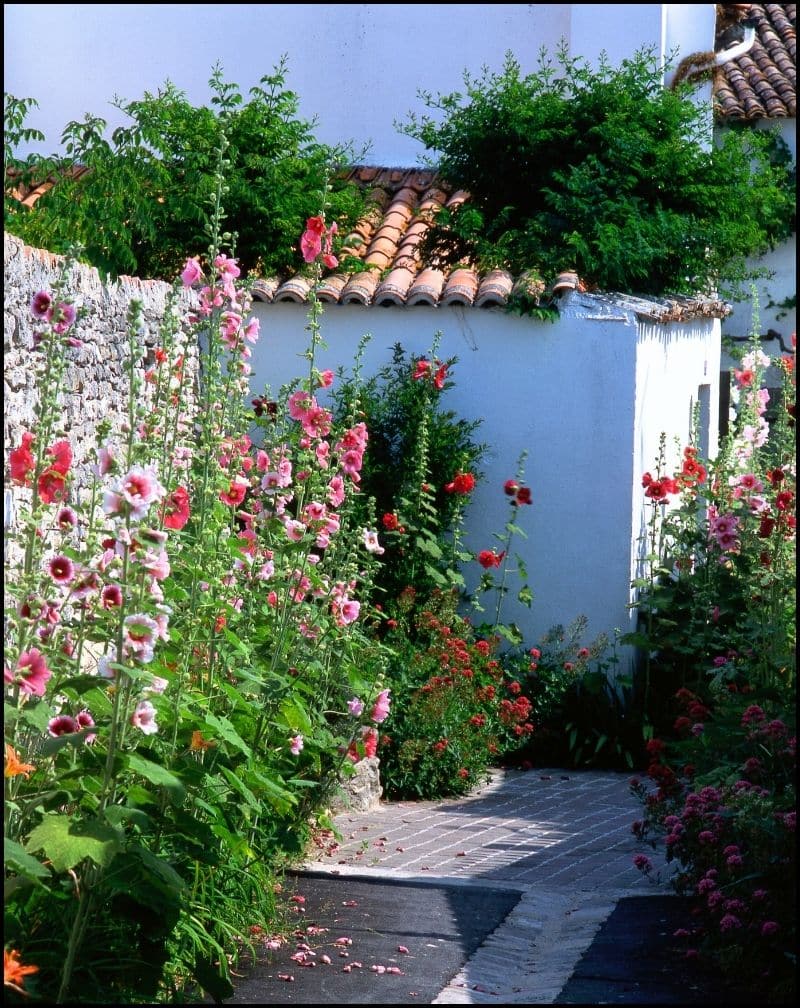
US Hardiness Zone: 3-9
Shade/Sun Requirements: Full Sun
Other Essential Information: Tall stems, biennial or short-lived perennialsHollyhocks are a delightful addition to any garden, known for their tall stems and beautiful, colorful blooms.
These plants thrive in sunny spots with well-drained soil, and once they flower, they generously self-seed, ensuring a new crop each year.
Hollyhocks not only add height and drama to your garden but also attract a variety of pollinators, enhancing the garden’s biodiversity.
9. Columbine
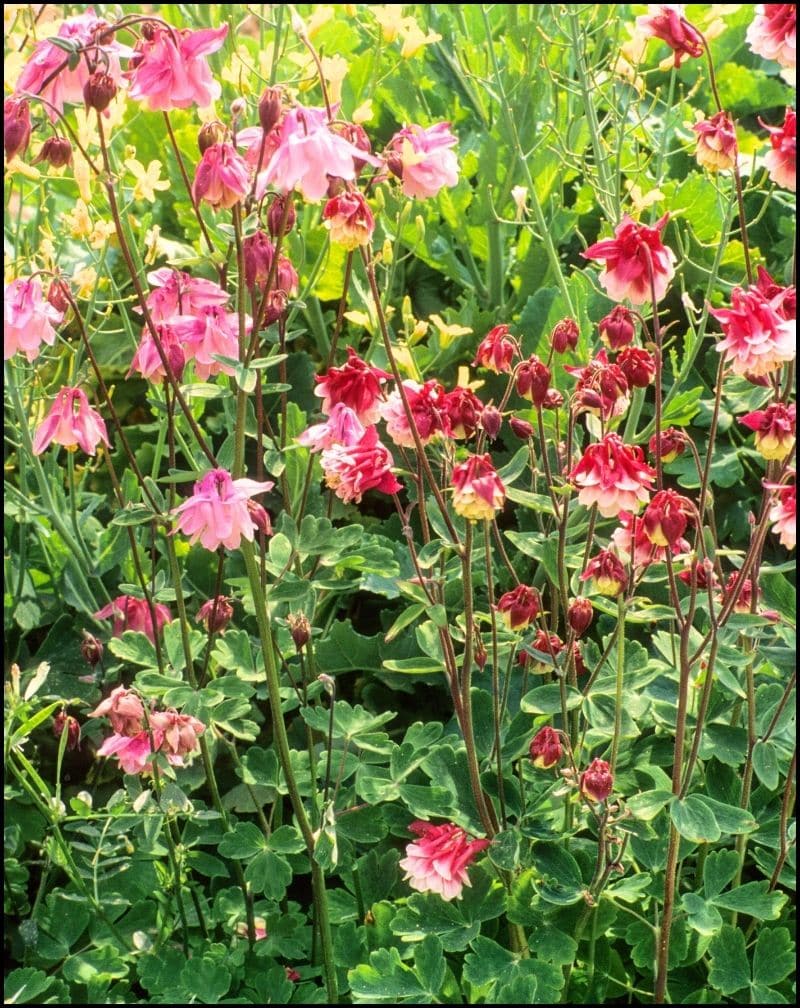
US Hardiness Zone: 4-8
Shade/Sun Requirements: Partial Shade
Other Essential Information: Attracts hummingbirds, delicate flowers
Columbine is one of my favorite self-seeding plants, renowned for its delicate and intricate flowers that bring a touch of elegance to the garden.
Columbine thrives in partial shade and adapts well to various soil types. Once established, it reseeds easily, gracing the garden with new blooms each year.
Additionally, Columbine attracts hummingbirds, adding a whimsical charm with its unique, spurred flowers.
10. Perennial Sunflower
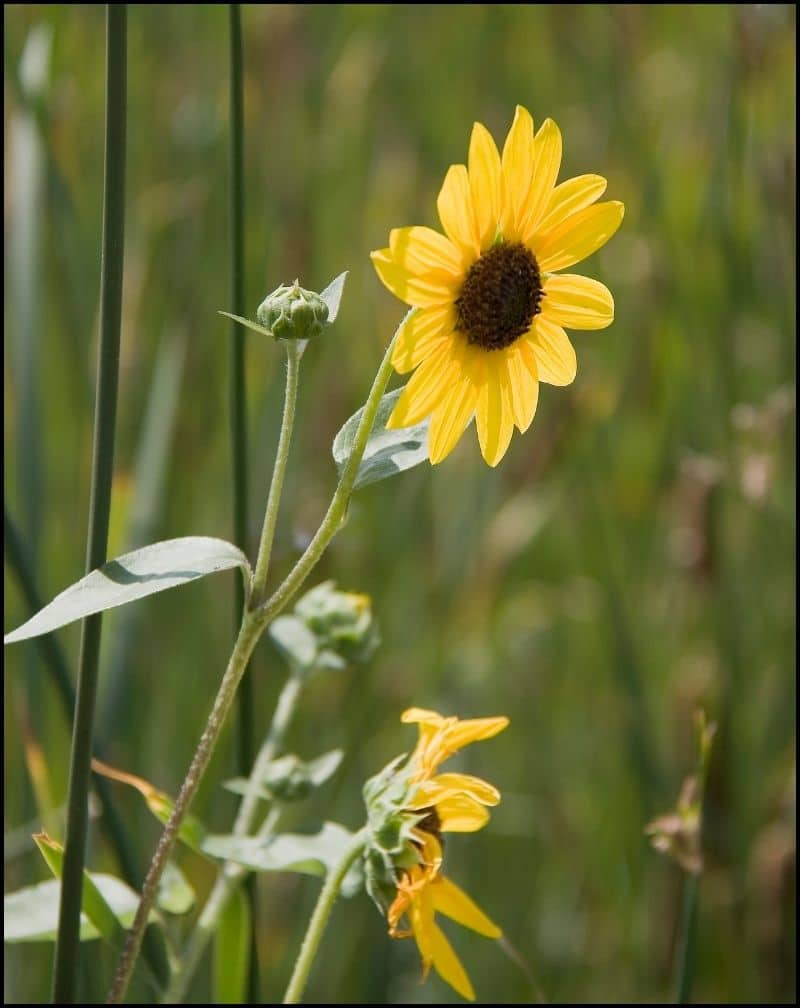
US Hardiness Zone: 2-11
Shade/Sun Requirements: Full Sun
Other Essential Information: Attracts pollinators, long blooming season
The Perennial Sunflower is a stunning addition to any garden, with its bright, cheerful blooms that bring a splash of color throughout the growing season.
These hardy plants self-seed effortlessly, ensuring they return year after year without any extra planting.
Perennial Sunflowers not only enhance the visual appeal of your garden but also attract pollinators like bees and butterflies, contributing to a healthy and vibrant ecosystem.
11. Cleome (Spider Flower)
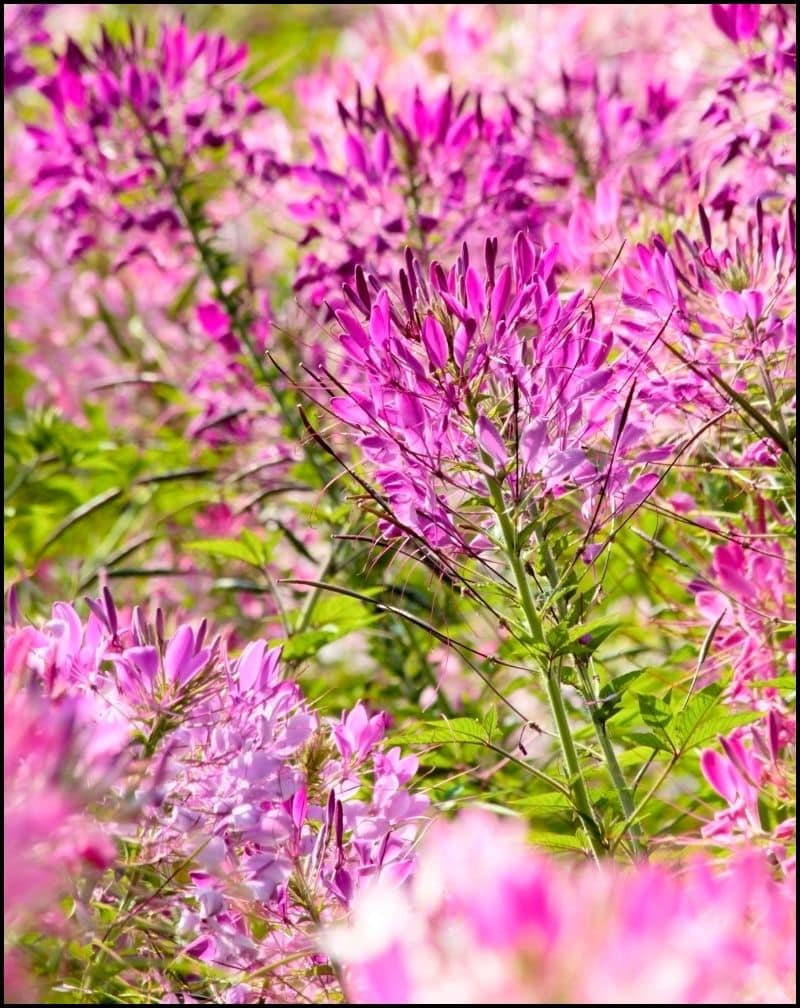
US Hardiness Zone: 4-10
Shade/Sun Requirements: Full Sun
Other Essential Information: Fragrant flowers, attracts pollinators
Cleome, commonly known as spider flower, is a favorite in my garden for its tall, fragrant blooms that add a touch of elegance.
These plants create lovely layers with their unique shape and come in shades of pink, white, and purple. Cleome self-seeds easily, ensuring a new crop every year.
Provide Cleome with plenty of sunshine and well-drained soil, and they will flourish with minimal maintenance.
12. Nigella (Love-in-a-Mist)
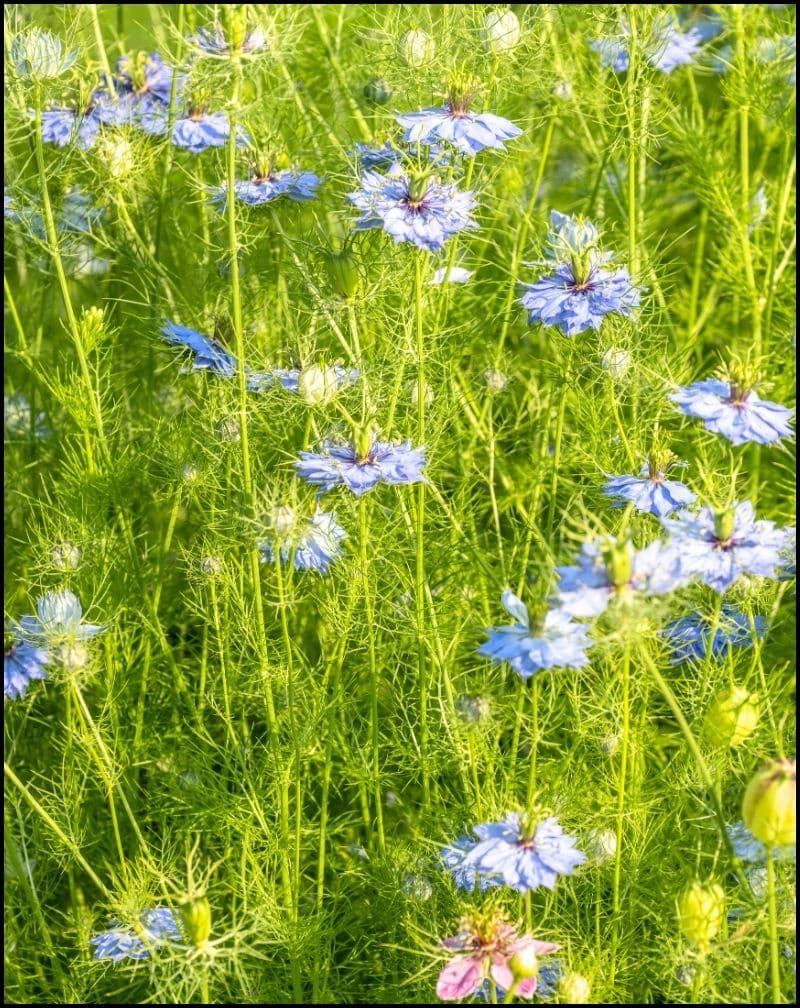
US Hardiness Zone: 3-9
Shade/Sun Requirements: Full Sun to Partial Shade
Other Essential Information: Feathery foliage, unique seed pods
Nigella, also known as Love-in-a-Mist, is a charming annual plant that adds unique beauty to any garden. With its feathery foliage and distinctive seed pods,
Nigella can self-seed effortlessly. The blue, white, or pink flowers are a delightful sight, and come spring, you’ll be pleasantly surprised by new patches of Nigella popping up in unexpected places, adding continuous charm to your garden.
13. Zinnia
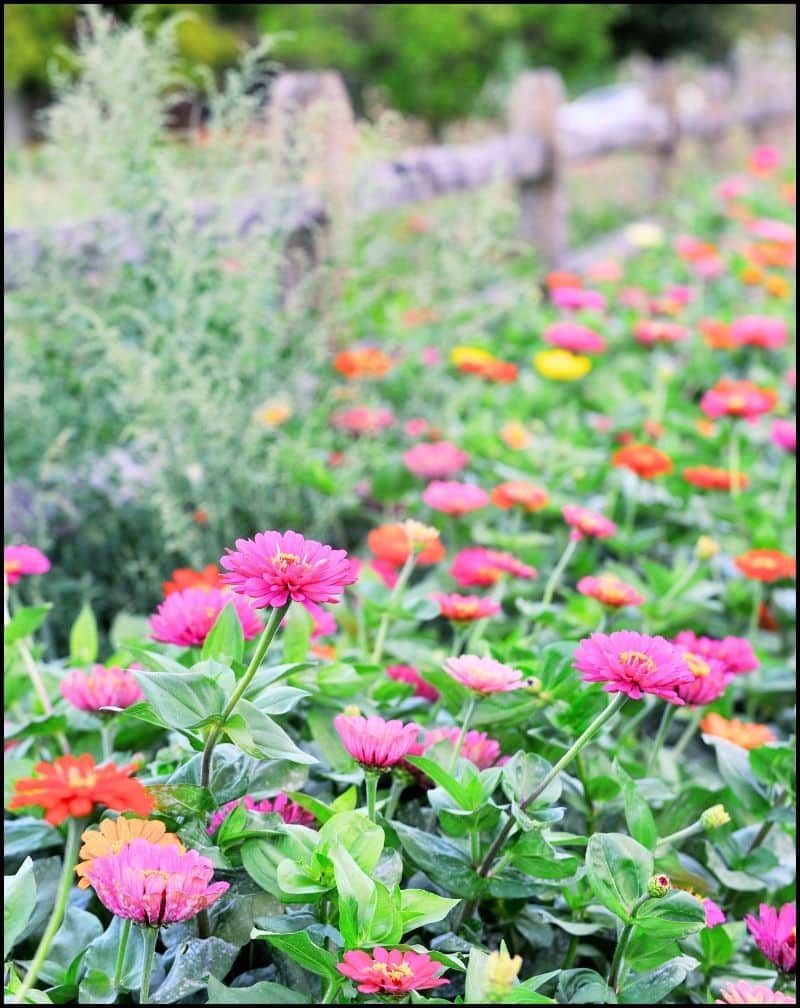
US Hardiness Zone: 3-10
Shade/Sun Requirements: Full Sun
Other Essential Information: Vibrant colors, attracts pollinators
Zinnia is a vibrant and colorful addition to any self-seeding garden. These annuals are known for their bright, daisy-like flowers that come in a wide array of colors, including red, pink, orange, yellow, and white.
Zinnias are incredibly easy to grow—simply let the flowers go to seed, and new plants will emerge the next season.
They thrive in full sun and well-drained soil, attracting pollinators like butterflies and bees, which further enhances your garden’s ecosystem.
14. Four O’Clocks
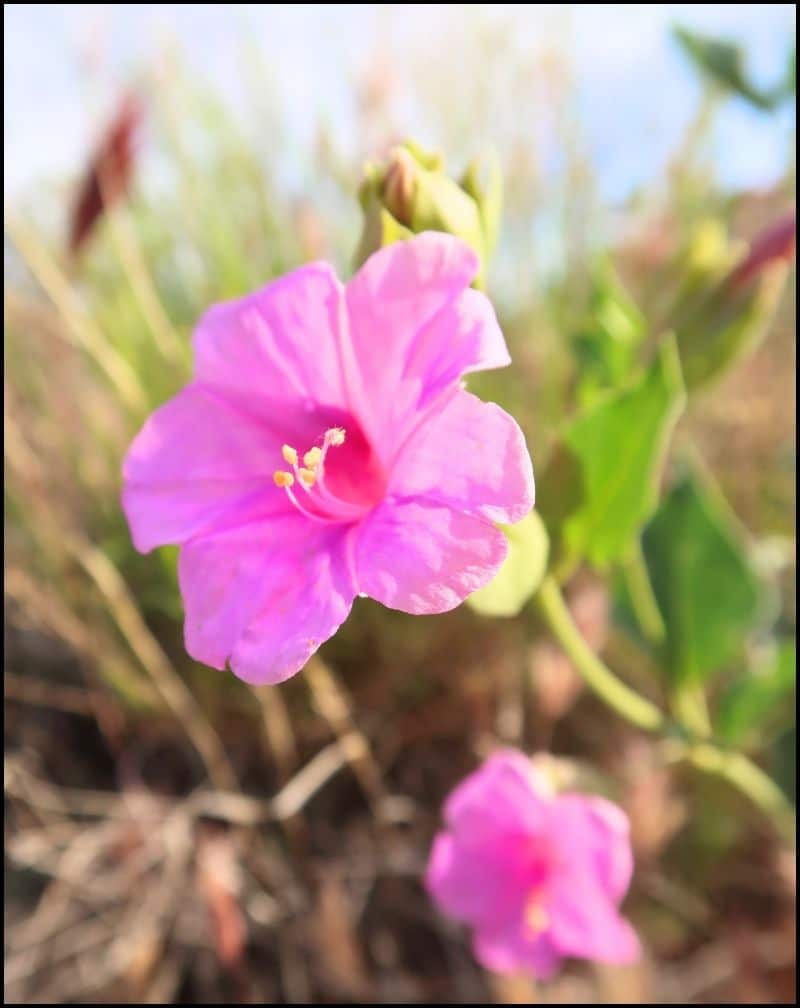
US Hardiness Zone: 4-10
Shade/Sun Requirements: Full Sun
Other Essential Information: Blooms in late afternoon, fragrant flowers
Four O’Clocks are one of my favorite self-seeding plants, known for their stunning blooms that open in the late afternoon.
This timing adds a splash of color to the garden just when many other flowers have closed for the day. Four O’Clocks come in a variety of colors, including pink, red, yellow, and white, and their lovely fragrance attracts pollinators like bees and butterflies.
Letting them self-seed ensures a vibrant display year after year with minimal effort.
15. Poppies
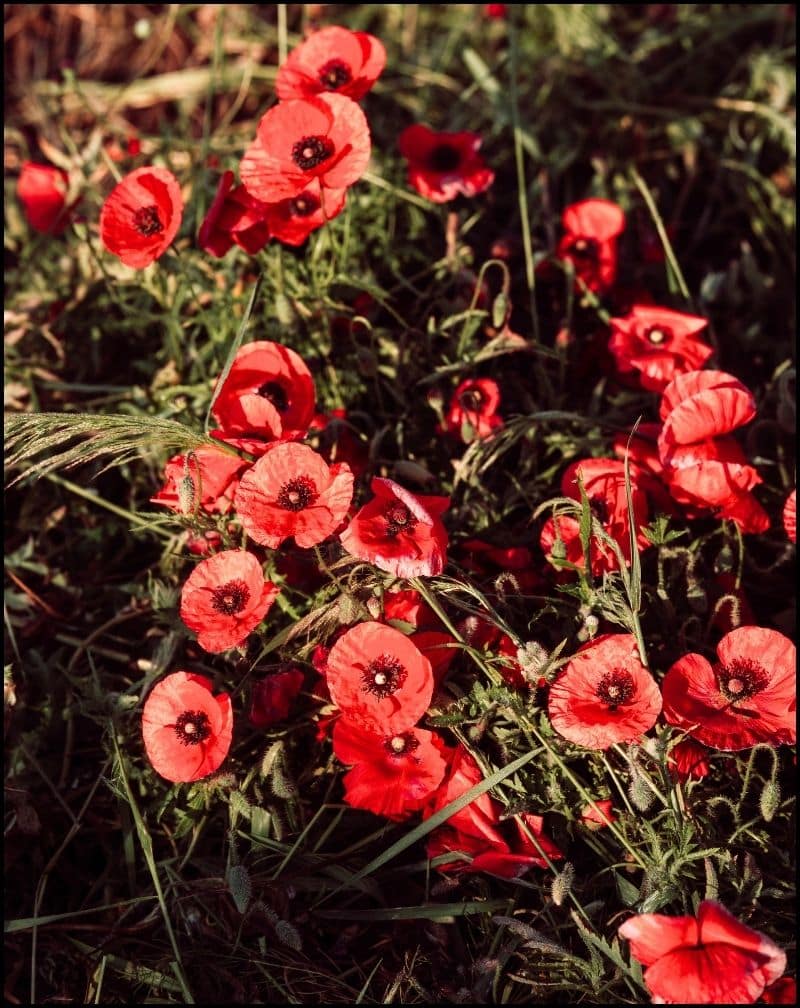
US Hardiness Zone: 3-9
Shade/Sun Requirements: Full Sun
Other Essential Information: Vibrant flowers, well-drained soil
Poppies are a favorite among self-seeding plants for their vibrant and eye-catching flowers. These annuals bring a burst of color to any garden, and their ability to self-seed means you can enjoy a delightful patch of poppies each growing season without any additional planting.
Poppies prefer sunny spots and well-drained soil, making them easy to grow and maintain even in varying weather conditions.
16. Echinacea (Coneflower)
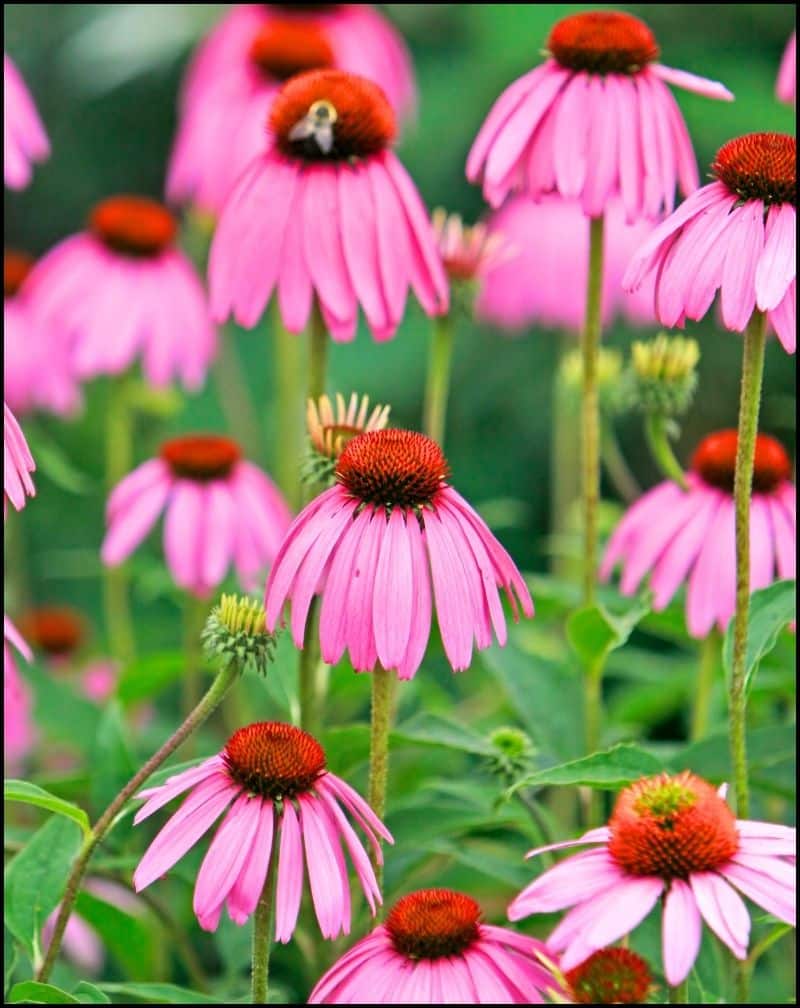
US Hardiness Zone: 3-9
Shade/Sun Requirements: Full Sun
Other Essential Information: Medicinal uses, attracts pollinators
Echinacea, commonly known as Coneflower, is a resilient and beautiful addition to any garden. These perennials produce large, daisy-like flowers with prominent centers that attract a variety of pollinators, including bees and butterflies.
Echinacea is not only valued for its ornamental beauty but also for its medicinal properties. As a self-seeding plant, it spreads naturally throughout your yard, ensuring a continuous display of vibrant blooms with minimal effort.
17. Rudbeckia (Black-eyed Susan)
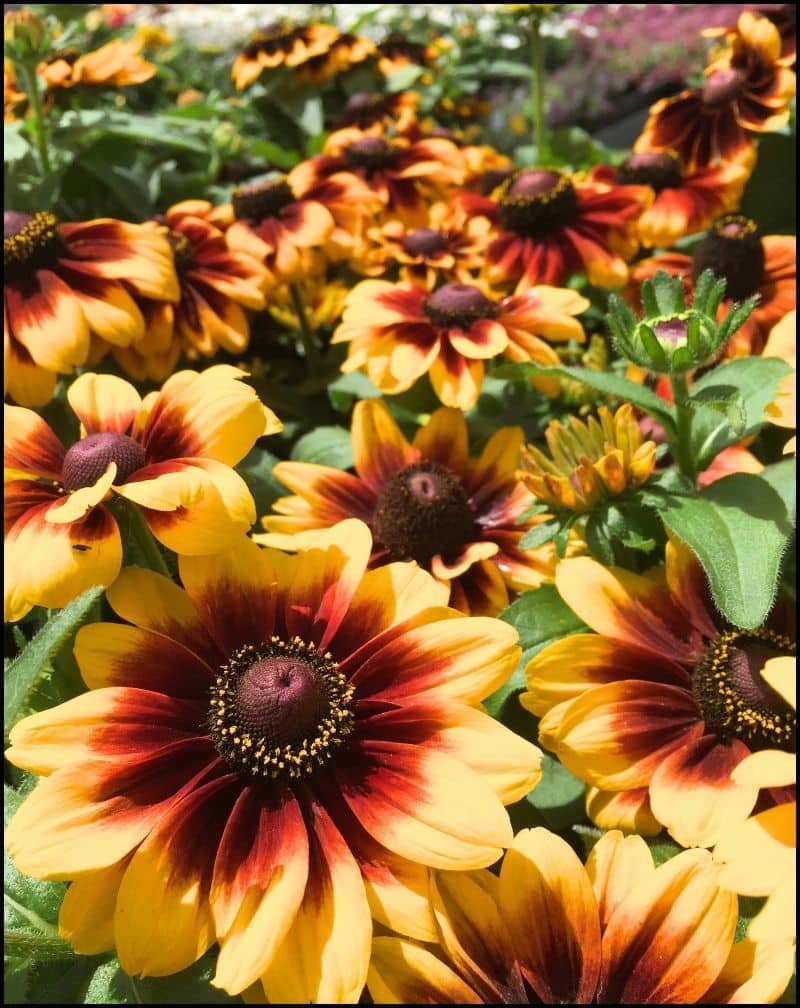
US Hardiness Zone: 3-9
Shade/Sun Requirements: Full Sun
Other Essential Information: Drought-tolerant, attracts pollinators
Rudbeckia, or Black-eyed Susan, is celebrated for its bright yellow petals and striking dark centers. These hardy plants thrive in a variety of climates and soil types, making them incredibly versatile.
Rudbeckia self-seeds effortlessly, ensuring they return each year with minimal effort. Their ability to attract pollinators like bees and butterflies adds to the overall health and vibrancy of your garden ecosystem.
Benefits of Self-Seeding Plants
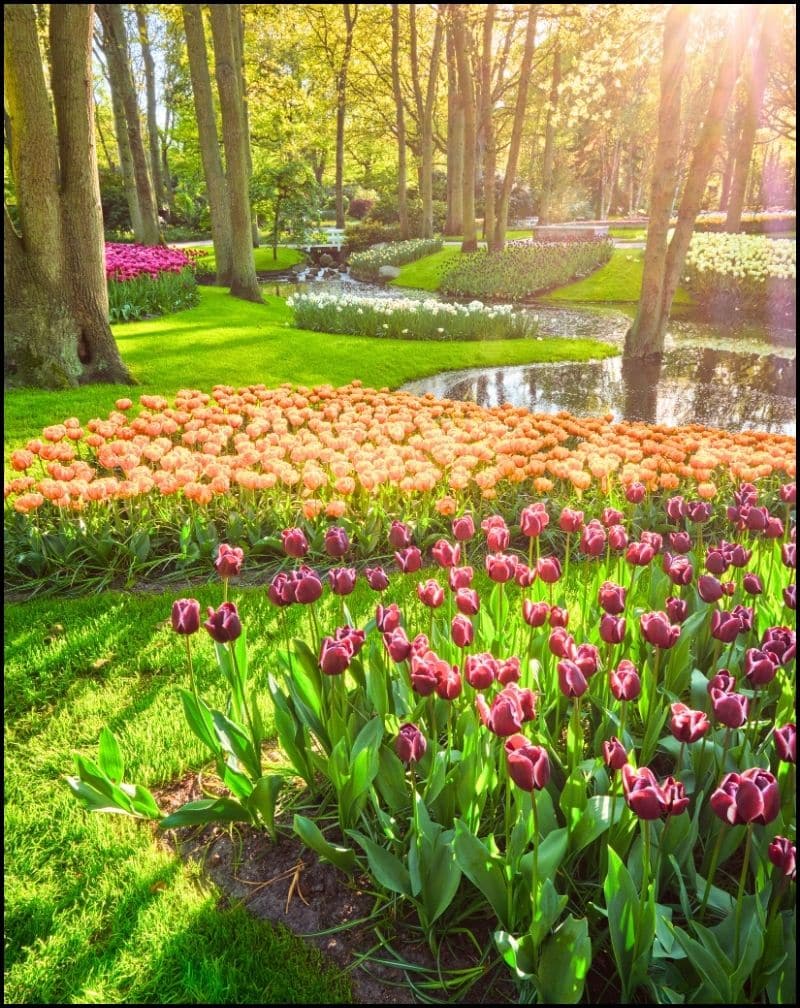
Self-seeding plants offer a budget-friendly and low-effort approach to gardening while enhancing the ecosystem by supporting diverse species. Let’s explore the key benefits of incorporating self-seeding plants into your garden:
Cost-Effective Landscaping
One of the primary advantages of self-seeding plants is their cost-effectiveness. Once planted, these plants often return year after year without the need to purchase new seeds.
This not only reduces costs but also saves frequent trips to the garden center. Additionally, self-seeding plants can quickly fill garden spaces, minimizing the need for additional plants and further cutting down on expenses.
For gardeners on a budget, this is an excellent way to achieve a lush and vibrant garden without breaking the bank.
Low Maintenance Gardening
Gardening can be labor-intensive, but self-seeding plants significantly reduce the workload. These plants require less attention once they’re established, as they have adapted to reproduce and thrive with minimal intervention.
The natural reseeding process eliminates the need for repetitive planting, saving you time and effort each season. Moreover, self-seeding plants are often resilient and adaptable, thriving in various conditions without the need for constant watering or soil amendments.
This makes them an ideal choice for those who love a beautiful garden but have limited time for maintenance.
Promotes Biodiversity
Self-seeding plants play a crucial role in promoting biodiversity within your garden. By growing and spreading naturally, they support a wide range of pollinators, including bees, butterflies, and hummingbirds.
This not only benefits the plants themselves but also enhances the overall health of the garden ecosystem. Many self-seeding plants are native species, which are well-suited to the local environment and provide essential food and habitat for native wildlife.
By incorporating a diverse range of self-seeding plants, you create a dynamic and lively garden environment that attracts a variety of birds, insects, and other wildlife, fostering a robust and thriving ecosystem.
How to Encourage Self-Seeding
Encouraging plants to self-seed involves selecting the right species, ensuring appropriate soil conditions, and applying proper watering techniques. Here are some tips to help you cultivate a self-seeding garden:
Choosing the Right Plants
Selecting plants known for their self-seeding capabilities is crucial for a successful self-seeding garden. Annuals like Cosmos, Nigella, and Zinnia are excellent choices due to their prolific seed production.
Perennials such as Echinacea and Columbine also work well, providing continuous blooms and natural propagation. Opting for native varieties is often beneficial, as they are better adapted to local conditions and require less maintenance.
Mixing these plants throughout your flower beds can ensure a continuous bloom cycle throughout the seasons, enhancing the overall beauty and resilience of your garden.
Optimal Soil Conditions
Soil plays a vital role in the success of self-seeding plants. The soil should be well-draining yet capable of retaining enough moisture to support seed germination.
Incorporating compost into the soil can enrich it, providing a nutrient-rich environment that encourages healthy seedling growth.
Additionally, leaving some bare patches of soil can help seeds take root more easily, as heavily mulched or covered soils may inhibit seed germination.
Ensuring optimal soil conditions will support the natural propagation of self-seeding plants, leading to a thriving and expansive garden.
Proper Watering Techniques
Watering is essential, especially during the initial growth phase of self-seeding plants. Consistent and moderate watering helps seeds germinate and young plants establish strong roots.
Once established, most self-seeding plants become relatively drought-tolerant and require less frequent watering. I prefer to water early in the morning to minimize evaporation and reduce the risk of fungal issues.
Avoiding overwatering is crucial, as it can lead to poor root formation and disease. By maintaining a balanced watering routine, you can ensure the healthy growth and natural spread of your self-seeding plants.
Managing Self-Seeding Plants
While self-seeding plants are excellent for creating a lush and dynamic garden, it’s important to manage their growth to prevent overcrowding and unwanted seedlings. Here are some strategies to maintain a balanced and beautiful garden:
Avoiding Overcrowding
Self-seeding plants can sometimes spread more aggressively than anticipated, leading to overcrowding in your garden.
To prevent this, regularly thin out the seedlings to ensure that each plant has enough space to grow strong and healthy without competing for resources. Strategic planting from the beginning, with appropriate spacing, can also help control the spread of self-seeding plants.
Additionally, using mulch around the base of plants can help limit seed dispersal and prevent seeds from settling and spreading uncontrollably.
Recognizing Unwanted Seedlings
It’s essential to differentiate between desired plants and unwanted seedlings in your garden. Familiarizing yourself with the seedlings of your preferred plants allows you to quickly identify and remove any that don’t belong.
Regular weeding is a routine task that helps maintain the garden’s aesthetic and health. Inspecting the garden frequently, especially after rainfall, can help catch unwanted seedlings early before they become established.
By staying vigilant and proactive, you can enjoy the benefits of self-seeding plants while maintaining control over your garden’s layout and composition.
Conclusion
Incorporating self-seeding plants into your garden is a wonderful way to achieve a beautiful, vibrant, and ever-changing landscape with minimal effort. These resilient plants not only enhance the aesthetic appeal of your yard but also support a healthy ecosystem by attracting pollinators and promoting biodiversity. Whether you’re a seasoned gardener or just starting out, self-seeding plants offer a low-maintenance and cost-effective solution to creating a flourishing garden that thrives year after year. Embrace the natural propagation of these plants, and enjoy the effortless beauty they bring to your outdoor space.